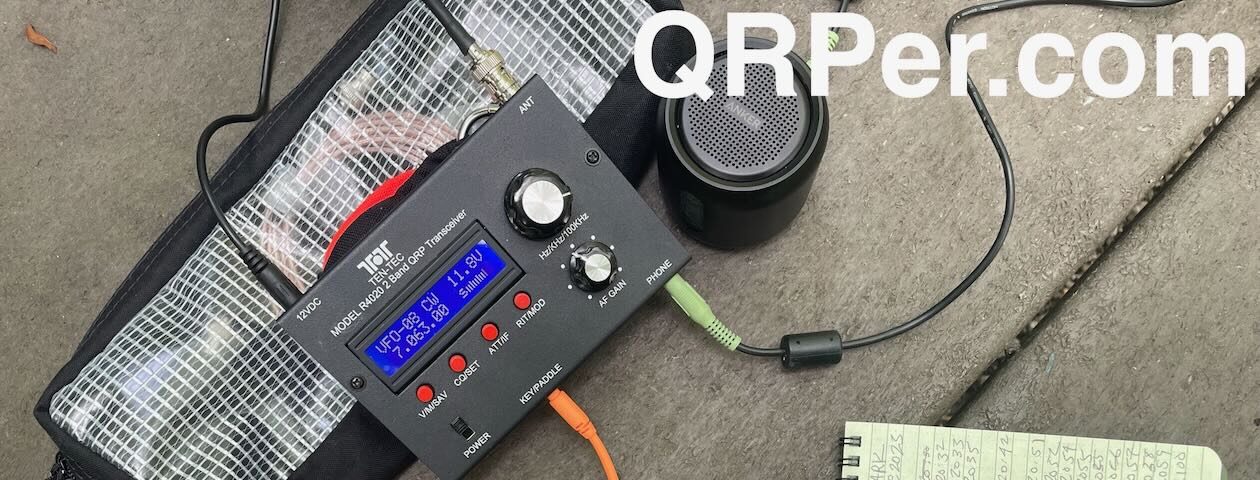Many thanks to Dean (KG7WGX) for sharing the following article about his portable field radio kit, which will be featured on our Field Kit Gallery page. If you would like to share your field kit with the QRPer community, read this post.
KX3 Field Kit
by Dean (KG7WGX)
I have used Pelican boxes in the 1150 size for years for transporting my KX3, PX3, keys, and a 10Ah battery. A few months ago, I tried to devise something that would let me take just the KX3 for “pack it in” operations, in one of the 1150 boxes.
I wanted the radio, battery, earbuds, paddles and a mini-mike to fit in the waterproof box. Whatever antenna I decided to take could be packed in a stuff bag separately. This would also apply to a kneeboard & chair (if I wasn’t going very far.)
The first picture shows the antenna bag, 20ft mast and the Pelican box:
Tbe second picture shows the components laid out:
The third picture shows how the battery, earbuds, paddles and mini-mic fit inside the Pelican box:
Gear links:
Note: All Amazon links are affiliate links that support QRPer.com at no cost to you.
- Elecraft KX3
- Shure SE112 earbuds
- Pelican 1150 case
- Elecraft KXPD3 paddles
- M0JKS mini-mike
- Bioenno BLF-1203AB battery
- Balun Designs 9:1 Unun
- Tufteln choke
- Tufteln KX3 cover
- Explorer 20 mast
- 25 ft RG316 coax
- 36 ft 18 ga wire for EF random
- (2) winders
- (5) aluminum tent stakes
- home-made “anti kickout” support
- home-made guyline ring & collar
- (2) zip earbud cases
- KX3 to Powerpole cable
Notes:
- Balun Designs standard RF connectors are SO-239 but a BNC connector is available for small additional charge. The 9130 has a hole for a support line, so I attached approx 10 ft of paracord to lift it above ground level.
- Guy line collar attached to Explorer 20 mast at section “overlap” region with epoxy. Guy line ring has 3 paracord lines and is rigged before extending mast. Guy line collar keeps guy line ring from moving down mast. A PVC end cap with a stainless machine screw serves as an “anti-kickout” support for the mast base. Each guy line has a line tightener.
- Shure SE112 earbuds have a rt-angle 3.5mm connector.
- M0JKS mini-mike has a TRRS connector on the mike, so the user can supply whatever length/connector style he prefers. 3.5mm audio cables are available with a straight TRRS on one end and a rt-angle TRRS on the other (to comply with Elecraft recommendations to reduce lateral force on the connectors.)
- Bioenno has changed the BLF-1203AB “shape” from rectangular to rounded edge, but the dimensions remain the same.
The total weight (with the mast and EF Random antenna) is a few ounces over 7 lbs, so this isn’t a Mountain Topper. 😉
73, Dean
KG7WGX



































 I also added a USB port to the battery pack because the (tr)uSDX can operate with around 0,5W directly from USB and that’s a great way to test for SWR and fine tune the antenna without stressing the finals.
I also added a USB port to the battery pack because the (tr)uSDX can operate with around 0,5W directly from USB and that’s a great way to test for SWR and fine tune the antenna without stressing the finals.

























